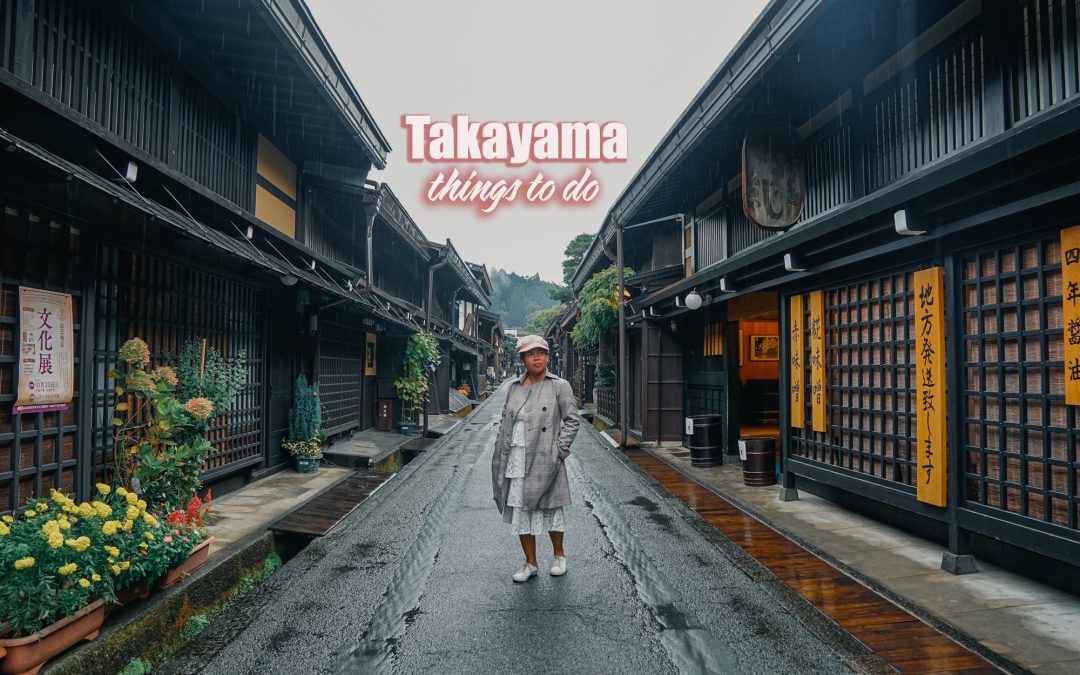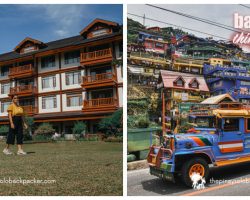Another Japanese cultural dance performance worked its charm on a group of tourists in Takayama in Gifu Prefecture. This thriving city, amid a collection of well-preserved, old-world villages is where all that is dreamlike about Gifu congregate. From laidback streets dappled with dark brown wooden old shops and sake breweries, to intricate and colorful festival floats, and nightly cultural performances, Takayama is truly an enjoyable place to spend a few days wandering around its moody streets. And chances are, you won’t be sharing the experience with hordes of tourists.
Here’s a list of some of the top Takayama tourist spots and things to do. Feel free to pick whatever suits your taste, budget, and schedule.
TRAVEL BLOG CONTENTS
TAKAYAMA TOURIST SPOTS
1.DEKONARU-ZA
Entrance Fee: (Adult) JPY 3,000 – PHP 1,416 (SGD 38, MYR 115, AUD 40, $28) , (Child) JPY 1,500 – PHP 708 (SGD 19, MYR 58, AUD 20, $14)
Address: 3-38 Honmachi, Takayama-shi, Gifu
Website: dekonaru-za.com
Performance Schedule:
*♥ = show is available
| Time | Mon | Tue | Wed | Thurs | Fri |
| 11:00 AM – 11:45 PM | ♥ | ♥ | |||
| 01:30 AM – 02:15 PM | ♥ | ♥ | ♥ | ♥ | ♥ |
| 05:30 PM – 06:15 PM | ♥ | ♥ | ♥ | ♥ | ♥ |
| 07:30 PM – 08:15 PM | ♥ | ♥ | ♥ |
Why is watching a Japanese cultural performance in Dekonaru-za one of the popular Takayama things to do?
A shamisen player hits a melodic riff and the dancer’s feet tap along with it. Legend has it, that in Hida, there was a strange-looking 4-faced god named Ryoumen Sukuna with 4 arms. And at Dekonaru-za Theater, the attention-grabbing story of Ryoumen Sukuna is featured on a nightly Japanese cultural performance. Although the performance obviously caters to tourists, I find it evocative that is why it is on top of my list of the things to do in Takayama. One scene showcases how the lion attacked the village causing catastrophe to the farmlands. The villagers prayed for the 4-faced god who is good at martial arts to save them.

Aside from this legendary account, Dekonaru-za also teaches its viewers how to fold the famed Japanese folding fan called Sensu, how to close and open the fan, shake it, and imitate sake drinking using it. They also teach guests how to dance Japanese folk songs such as Hida-Yansa from Hida and Tankou-bushi from Kyushu. Another interesting activity here is the trail lesson of Japanese drum where visitors can experience beating the drum with the snap of their wrists.
2.SANMACHI SUJI DISTRICT (TAKAYAMA OLD TOWN)
Entrance Fee: FREE
Open hours: 24 hours but shops are usually open from 9:00 AM – 5:00 PM year-round
Access: About 15 minute walk from Takayama Station
Why is visiting Sanmachi Suji one of the top things to do in Takayama?
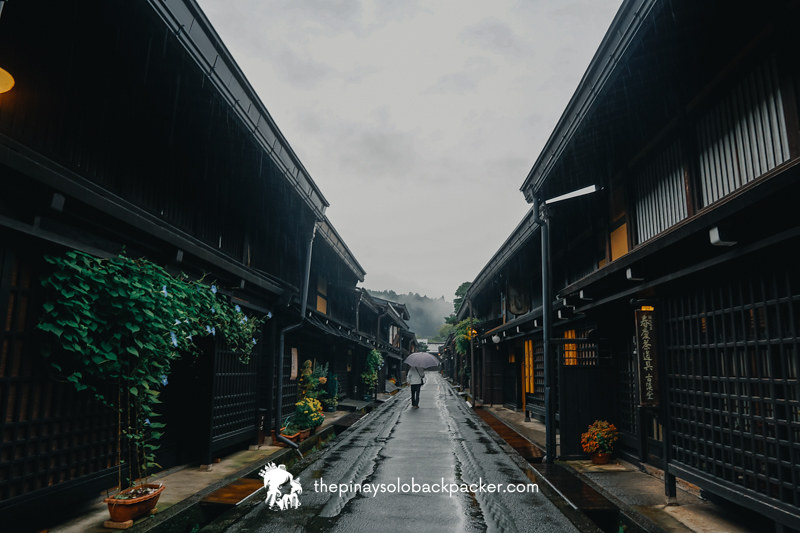
The picturesque, well-preserved ancient quarter called Sanmachi Suji is composed of 3 merchant streets, namely Nino-machi, Sanno-machi, and Ichino-machi situated on the east of Miyaga-wa River. This quaint district make up Hida-Takayama’s famous historic district that was recognized as Historically Significant Traditional Building Preservation Area. The said old-world streets are fringed by well-preserved dark brown, wooden traditional houses, inns, sake breweries, shops, and restaurants.

Many shops in Sanmachi Suji (Takayama Old Town) are sake breweries since Takayama is a well-known sake-producing location in Japan that started way back in the 17th century. The sake of Takayama is famed for its taste because of its cold climate, which is crucial for sake production, and its use of Hida-Homare local rice. The various sake breweries in Sanmachi Suji, Takayama produces different sake brands with unique tastes, flavors, and aroma. Don’t miss visiting one of them, the sake breweries in Hida-Takayama offer sake tasting, which is usually FREE or charges may start at JPY 500 – PHP 236 (SGD 6, MYR 19, AUD 7, $5) per person.
3.TAKAYAMA JINYA
Entrance Fee: JPY 440 – PHP 207 (SGD 6, MYR 17, AUD 6, $4)
Open hours:
March – October (except August) – 8:45 AM – 5:00 PM
August – 8:45 AM – 6:00 PM
November to February – 8:45 AM – 4:30 PM
Closed December 29, 31, and January 1.
Access: About 15 minute walk from Takayama Station, located near the red Nakabashi Bridge.
Why is Takayama Jinya a must-see Takayama tourist spot?
Just a few meters away from Sanmachi Suji (Hida Takayama Old Town) is Takayama Jinya, an erstwhile Hida government office from 1692 to 1871 under the Tokugawa shogunate, the last shogunate to control Japan.
Takayama Jinya was once the villa of Kanamori Nagachika, a Japanese samurai who was the first ruler of the Kanamori clan. Based on anecdotes, after the Battle of Sekigahara, Hida province was awarded to Kanamori Nagachika by Tokoyama Ieyasu. Lord Kanamori then became a daimyo, a powerful Japanese feudal lord of Hida-Takayama, and eventually founded Takayama Castle.

In 1692, Kanamori clan was transferred to Dewa Province (present day Yamagata Prefecture). Because of its rich minerals, Hida eventually was retained as a tenryo territory and put under the control of Tokugawa shogunate. Takayama Jinya then became the magistrate’s office during the Edo Period. It is said to be the only surviving building of its kind in Japan, reason why it’s declared as a National Historic Site.
Takayama Jinya is now a folk museum that is open to the public. Beyond its main gate stretch Japanese garden, well-proportioned rooms covered by tatami and accentuated with period furnishings, and earthen storehouses, all lying within its walls.
Interestingly, this ancient government building also served as tax collection center where rice paid as tax where kept inside earthen storehouses, and also a courthouse where people air their complaints and cases, and where the suspects were questioned, tortured, and sentenced in an interrogation room called Oshirasu.
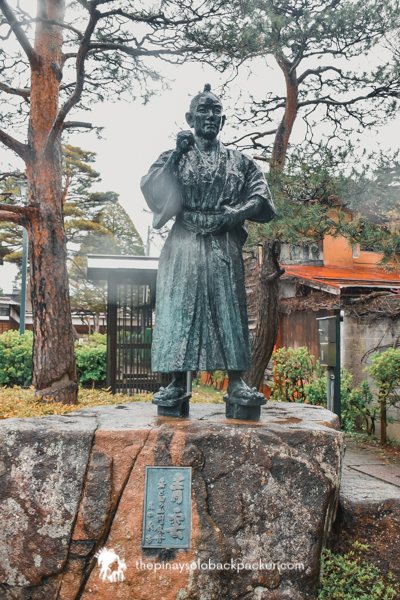
Outside Takayama Jinya, you’ll come across the statue of a popular samurai – Tetsutaro Yamaoke, also known as Yamaoka Tesshu or Ono Tetsutaro. He also established the Itto Shoden Muto-ryu school of swordsmanship, became body guard for the last Togugawa Shogun, and eventually became a close aid of Emperor Meiji.
4.TAKAYAMA MORNING MARKETS
Entrance Fee: FREE
Open Hours: April – October: 6:00 AM – 12:00 PM, November – March: 7:00 AM -12:00 PM
Access: Roughly 15 minute walk from Takayama Station
Why is visiting a morning market one of the best things to do in Takayama?
An early morning stroll to check out the morning markets in Takayama is one the interesting activities to try in this age-old town. There are 2 morning souks here: the Jinya-mae Morning Market in front of Takayama Jinya, and the Miyagawa Morning Market, located beside the Miyagawa River. These markets open around 6:00 AM or 7:00 AM depending on the season. They’re seemingly endless sprawl of assorted traditional food products and local handcrafted souvenirs such as Sarubobo doll figures, often visited by both locals and tourists.
5.HIDA KOKUBUNJI TEMPLE
Entrance Fee: (Adult) JPY 300 – PHP 142 (SGD 4, MYR 12, AUD 4, $3), (Elementary or Junior Highschool) JPY 250 – PHP 118 (SGD 3, MYR 10, AUD 3, $2)
Open Hours: Daily 9:00 AM – 4:00 PM
Access: 5-minute walk from JR Takayama Station
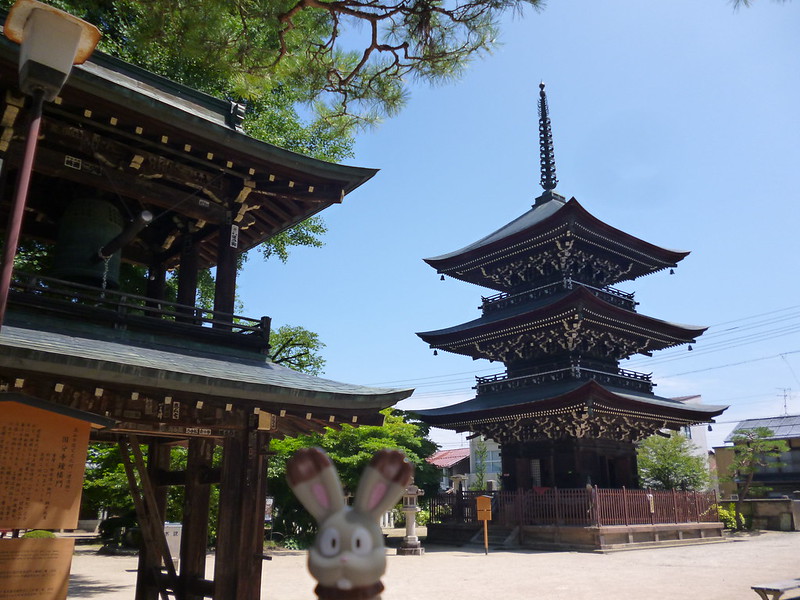 Photo by Kasadera (CC)
Photo by Kasadera (CC)
Why is Hida Kokubunji Temple one of the top places to visit in Takayama?
The foundation stones of the Shingon-sect Buddhist Temple known as Hida Kokubunji Temple in Takayama is a National Historic Site. Meanwhile, the main hall of the temple is believed to be one of the oldest structures in Takayama, thus, it was selected as an important cultural property. Hida Kokubunji Temple is one of the few remaining temples founded by Emperor Shomu throughout the Nara Era. Within the temple confines is a 3-tiered pagoda that used to be 7-storey tower. The temple stands out during autumn season because it is fringed by over 1, 250 year old towering gingko trees.
6.TAKAYAMA MUNICIPAL GOVERNMENT MEMORIAL
Entrance Fee: FREE
Open Hours: 8:30 AM – 5:00 PM
Access: Approximately 15 minute walk from Takayama Station
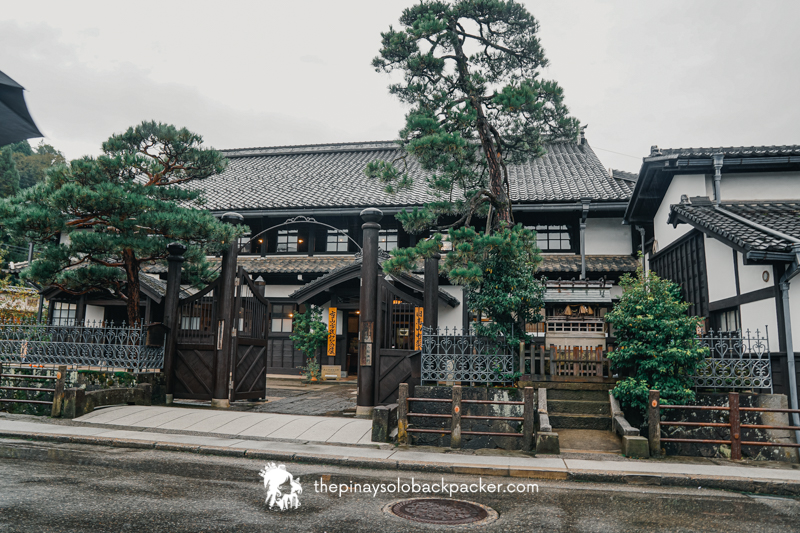
Why is Takayama Municipal Government Memorial one of the best places to visit in Takayama?
The well-preserved and well-maintained Takayama Municipal Government Memorial was built using the Japanese cypress and antique glass windows. It is located near the Takayama Old Town (Sanmachi Suji) and served as the city office during the Meiji and Showa Period. If you want to see how the old government offices look like, this is a must visit. There’s a FREE English tour, feel free to ask the staff for more information.
7.HIDA TAKAYAMA MUSEUM OF ART
Entrance Fee:
| General Admission | Group Admission (20 or more) | |
| Adults | JPY 1,300 – PHP 613 (SGD 16, MYR 50, AUD 18, $12) | JPY 1,100 – PHP 519 (SGD 14, MYR 42, AUD 15, $10) |
| College/High School | JPY 1,000 – PHP 472 (SGD 13, MYR 39, AUD 13, $9) | JPY 800 – PHP 378 (SGD 10, MYR 31, AUD 11, $7) |
| Junior High/Elementary | JPY 800 – PHP 378 (SGD 10, MYR 31, AUD 11, $7) | JPY 600 – PHP 283 (SGD 8, MYR 23, AUD 8, $6) |
*Café and museum shop have FREE entrance.
Open Hours: 9:00 AM – 5:00 PM, (Free entrance after 4:30 PM)
Access: From Takayama Station Nohi Bus Center, take a Sarubobo Bus to Hida No Sato. Alight at Hida Takayama Bijutsukan. Travel time is about 10 minutes and fare is JPY 210 – PHP 99 (SGD 3, MYR 8, AUD 3, $2) (one-way) or JPY 620 – PHP 293 (SGD 8, MYR 24, AUD 8, $6) for a day pass.
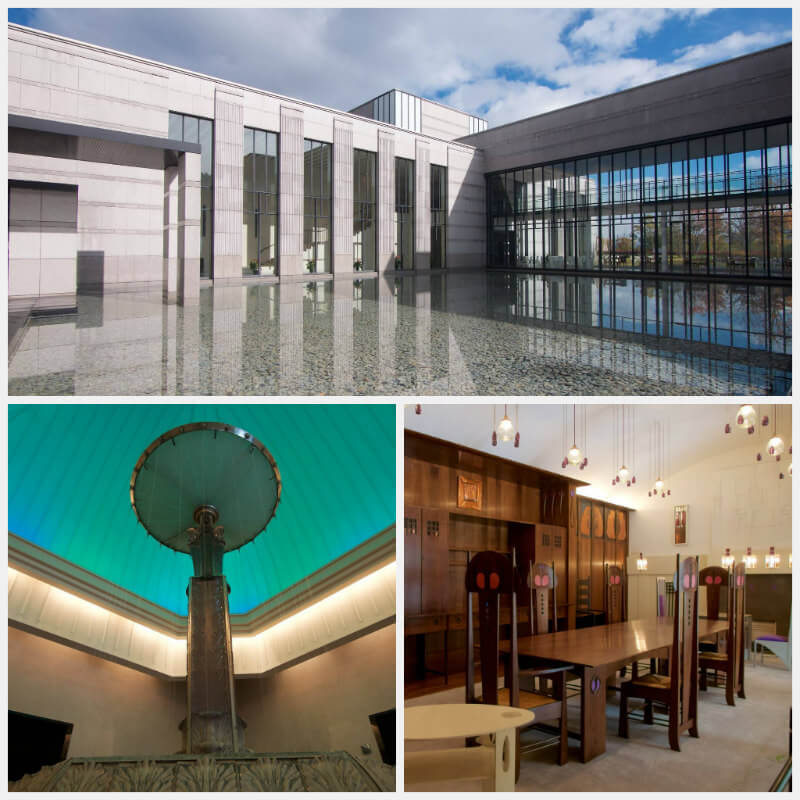
(Photo by Frank Fujimoto)
Why is Hida Takayama Museum of Art one a must-visit Takayama tourist spot?
Art lovers will be delighted to visit the Hida Takayama Museum of Art, a spacious private gallery featuring European art-nouveau and art-deco glassware and furniture that flourished in the 19th century. The gallery’s highlight is the 3-meter high Fountain of the Champs-Elysees Shopping Arcade (1926) designed by Rene Lalique. Other important displays here include the works of Emile Galle, Louis Majorelle, Charles Rennie Mackintosh, Dale Chihuly, and Gustav Klimt, among others.
This elegant, world-renowned museum rightfully deserved its 3 Stars rate from Michelin Guidebook since 2007. It is blissfully standing on the hill of Hida-Takayama with a scenic view of Takayama City bounded by the Northern Alps.
8.TAKAYAMA FESTIVAL FLOATS EXHIBITION HALL (TAKAYAMA MATSURI YATAI KAIKAN)
Entrance Fee: (Adult) JPY 900 – PHP 424 (SGD 11 , MYR 35, AUD 12 $8) , (Child) JPY 450 – PHP 212 (SGD 12, MYR 6, AUD 6, $4)
Open Hours: (December to February) 9:00 AM – 4:30 PM, (March to November)9:00 AM – 5:00 PM
Access: About 25 minute walk from Takayama Station
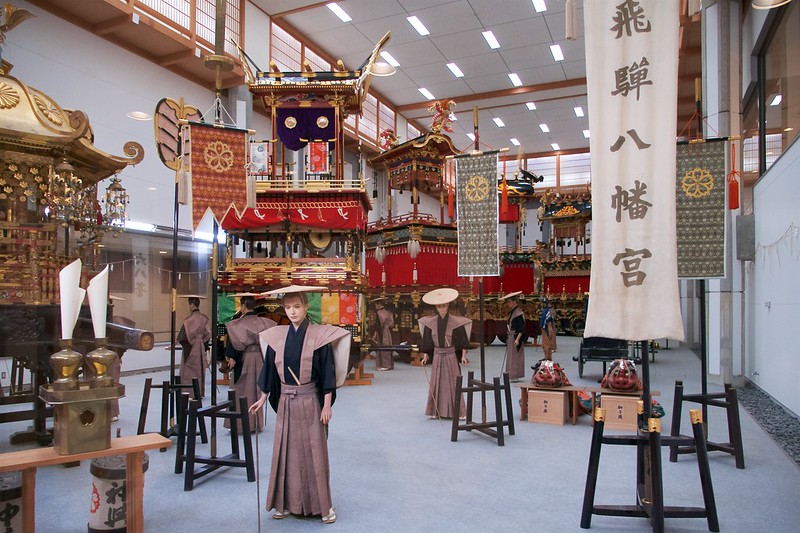
(Photo by Frank Fujimoto)
Why is visiting the Takayama Festival Floats Exhibition Hall one of the top Takayama things to do?
If you miss the popular Takayama Matsuri (Takayama Festival), dubbed as one of Japan’s most beautiful festivals, you can visit the Takayama Festival Floats Exhibition Hall. Takayama Matsuri is held every spring from April 14 – 15 and autumn during October 9 – 10. The Takayama Matsuri features age-old, intricately decorated yatai (floats) boasting lacquerware, glitzy carvings, and metalworks. Some yatai even feature karakuri ningyo, Japanese automated mechanical dolls that can move and dance.
At the Takayama Festival Floats Exhibition Hall, visitors can appreciate 4 of the 23 multi-tiered yatai used in Takayama Matsuri. Beside Matsuri Yatai Kaikan is Nikkokan Hall, an airy gallery housing the miniature models of the elaborately designed Toshugo Shrine.
9.HIDA BEEF
The beef from a black-haired Japanese cattle breed raised in Gifu for at least 14 months is called Hida-gyu (Hida Beef). It is believed that the first Hida-gyu beef came from a cow named Yasufuku way back in 1981 that contains the perfect genetic makeup to produce calves with high quality beef. Hida beef takes pride in its quality as it is required to be certified and confirmed as Grade A or B by the Hida Beef Brand Promotion Conference and must have a firmness and texture Grade of 5,4, or 3 as graded by the Japan Meat Grading Association.

We had our first taste of Hida beef at Ajino Yohei where we grilled our own beef and vegetables. We tried the set menu of 200 gram Hida beef steak that came with miso soup, Japanese rice, vegetables, and condiments priced at around JPY 2,500 – PHP 1,180 (SGD 31, MYR 96, AUD 34, $23). They also have halal option, perfect for Muslim travelers. It is one of the most delicious and finest beef I’ve tasted in Japan, not to mention that it is reasonably priced.
10.HIDA NO SATO (HIDA FOLK MUSEUM)
Entrance: (Adult) JPY 700 – PHP 330 (SGD 9, MYR 27, AUD 9, $6) , (Junior Highschool) JPY 100 – PHP 47 (SGD 1, MYR 4, AUD 1, $0.92)
Open Hours: Daily 8:30 AM – 5:00 PM
Access: Takayama Station Nohi Bus Center, take the Sarubobo Bus to Hida No Sato. Get off at Hida No Sato Bus Stop. Fare is JPY 210 – PHP 99 (SGD 3, MYR 8, AUD 3, $2) (one-way) or JPY 620 – PHP 293 (SGD 8, MYR 24, AUD 8, $6) for a day pass.
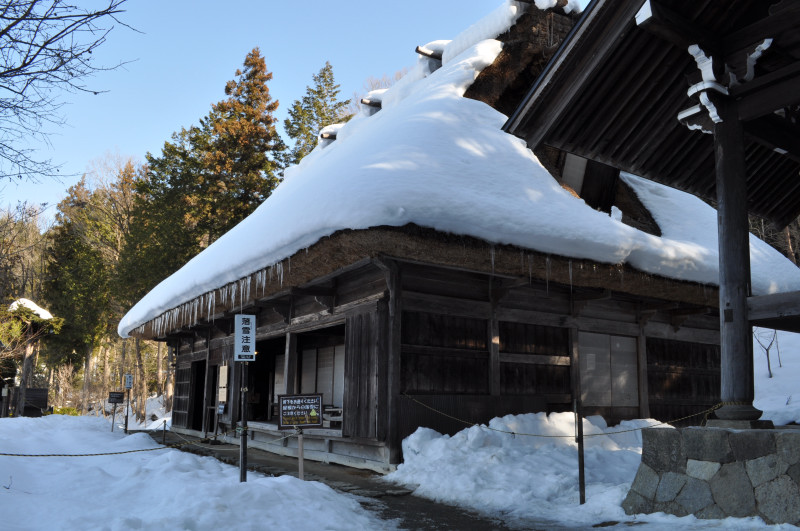
Photo by Sally Sherwood (CC)
Why is visiting Hida No Sato one of the popular things to do in Takayama?
Hida No Sato or Hida Folk Village in Takayama is peppered with around 30 age-old traditional houses from Hida Region that have been relocated around Goami Lake to create an open air museum. The bucolic atmosphere here will remind you of Shirakawa-go Village mainly because of some gassho-zukuri farmhouses. The ancient houses were mostly constructed during the Edo Period, some of them are erstwhile storehouses, logging huts, gassho-zukuri farmhouses, and village head’s houses. Visitors can enter the structures that are mostly furnished with farm tools and local handicrafts. It is said that each morning, fires are lit in the sunken hearths called irori for the upkeep of the houses.
Don’t miss the demonstration typically happening between 10:00 AM to 3:00 PM where the craftsmen showcases traditional activities such as wood carving, pottery techniques, and weaving, etc. If you are interested, you can also try making local handicrafts like beads, sarubobo dolls, key chains, mugs, etc. at the Hida Takayama Craft Experience nearby.
TAKAYAMA MAP WITH TOURIST SPOTS
To further help you in planning your trip, here’s a Takayama Tourist Map with the tourist spots mentioned above.
TAKAYAMA SIDETRIPS
1.HIDA-FURUKAWA

Just 15 minutes by JR train from Takayama Station is the laid-back riverside town of Furukawa (also Hida Furukawa). Like Takayama, this pleasant municipality is peppered with age-old wooden houses beside canal-lined streets thriving with charming carps. I really enjoyed our quick stroll here. Will be writing a separate blogpost about Furukawa, as this area deserves a separate article. Despite being a small, bucolic town, you’ll never run out of things to do or places to see in Hida Furukawa. This place is a must-see for anime lovers because some locations featured in the hit anime “Kimi No Nawa” (Your Name), can be found here. Two of my favorite things to do in Furukawa and Hida are Kumihimo Braiding and Rail Biking at Gattan Go.
2.SHIRAKAWA-GO
Rightfully famous for its Gassho-style houses, Shirakawa-go has scenery rich in contrasting colors and real character. It was spring when I first visited Shirakawa-go, cherry blossoms sprinkled around the farmland and the soaring tree-studded mountains blanketed by morning fogs add up to its dramatic landscape. We revisited again recently and despite the rain, it’s still dreamy. Shirakawa-go village in Gifu, Japan has held onto its old-fashioned traditions, appearance, and character, making it a UNESCO World Heritage Site.

You can read my detailed Shirakawa-go travel blogs below.
ALSO READ:
SHIRAKAWAGO TRAVEL GUIDE
HOW TO GET TO SHIRAKAWAGO FROM TOKYO, OSAKA, AND NAGOYA
3.GUJO-HACHIMAN

Another pleasant riverside town in Gifu that makes for a pleasant trip is Gujo-Hachiman, known for its pristine waters and as leading producer of food replicas in Japan. A leisurely stroll here will take you to the pristinely-preserved canals, fountains, and waterways still used by the residents for laundry and even washing rice and vegetables! Will discuss Gujo-Hachiman in detail on a separate blogpost.
HOW TO GET TO TAKAYAMA
If you want to travel to Takayama, Hida, Kanazawa, Gifu, Niigata, and Nagano, best to purchase a JR Hokuriku Arch Pass. This pass will save you a lot since the one way fare to Kanazawa via the Hokuriku Shinkansen is JPY 14,380 (without JR Hokuriku Pass)! So, if you have a JR Hokuriku Arch Pass, that fare is fully covered!
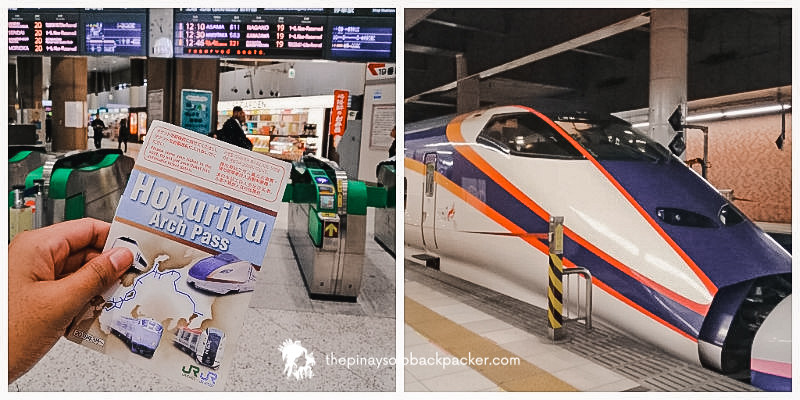
JR Hokuriku Arch Pass – BOOK HERE (Official Website) or RESERVE HERE (via Klook)
Here’s the JR Hokuriku Arch Pass Price. Best to purchase it online before visiting Japan to save you a few bucks.
| ADULT | CHILD | |
| Purchasing Outside Japan | JPY 24,440 – PHP 11,543 (SGD 307, MYR 942, AUD 331, $226) | JPY 12,220 – PHP 5,769 (SGD 153, MYR 471, AUD 112, $165) |
| Purchasing Inside Japan | JPY 25,460 – PHP 12,019 (SGD 320, MYR 982, AUD 344, $ 234) | JPY 12,730 – PHP 6,10 (SGD 160, MYR 491, AUD 172, $117) |
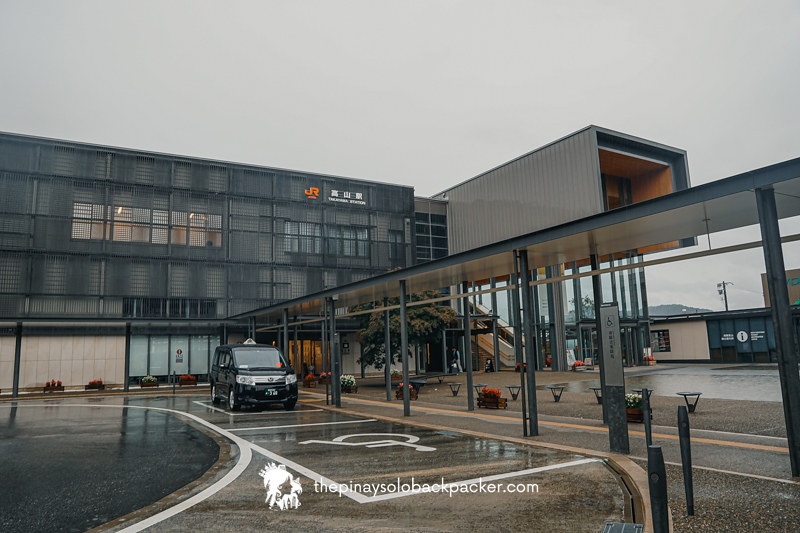
(JR Takayama Station)
TOKYO TO TAKAYAMA
- From Tokyo Station, take the Hokuriku Shinkansen towards Kanazawa Station. Travel time is about 2 hours and 28 minutes. Fully covered by the JR Hokuriku Arch Pass. It’s highly recommended to reserve a seat for FREE at the JR ticket office to secure a seat.
- Alight at Kanazawa Station. Travel time is 2 hours and 30 minutes.
- Make your way to Kanazawa Bus Station. About 4 minutes.
- Ride the Takayama -Shirakawa go, Kanazawa Bus to Takayama Nohi Bus Center Line. Fare is about JPY 3,600 – PHP 1,699 (SGD 45, MYR 139, AUD 48, $33).
- Get off at Takayama Nohi Bus Center Line. Travel time is roughly 1 hour and 15 minutes.
OSAKA TO TAKAYAMA
- Make your way to JR Osaka Station.
- Board the JR Limited Express Thunderbird to Kanazawa. Usually leaves at Platform 11. Fully covered by JR Hokuriku Arch Pass. But make sure to reserve a seat (FREE) at the JR office/ticket counter since a separate limited express ticket is required for limited express trains
- Get off at Kanazawa Station. Travel time is about 2 hours and 43 minutes.
- Walk to Kanazawa Bus Station. About 4 minutes.
- Take the Takayama -Shirakawa go, Kanazawa Bus to Takayama Nohi Bus Center Line. Fare is about JPY 3,600 – PHP 1,699 (SGD 45, MYR 139, AUD 48, $33).
- Alight at Takayama Nohi Bus Center Line. Travel time is roughly 1 hour and 15 minutes.
KANAZAWA TO TAKAYAMA
- Make your way to Kanazawa Bus Station.
- Board the Takayama -Shirakawa go, Kanazawa Bus to Takayama Nohi Bus Center Line. Fare is about JPY 3,600 – PHP 1,699 (SGD 45, MYR 139, AUD 48, $33)
- Get off at Takayama Nohi Bus Center Line. Travel time is roughly 1 hour and 15 minutes.
TOYAMA TO TAKAYAMA
- Take the Hokuriku Shinkansen towards Kanazawa. Fully covered by JR Hokuriku Arch Pass.
- Alight at JR Takayama Station. Travel time is roughly 23 minutes.
WHERE TO STAY IN TAKAYAMA
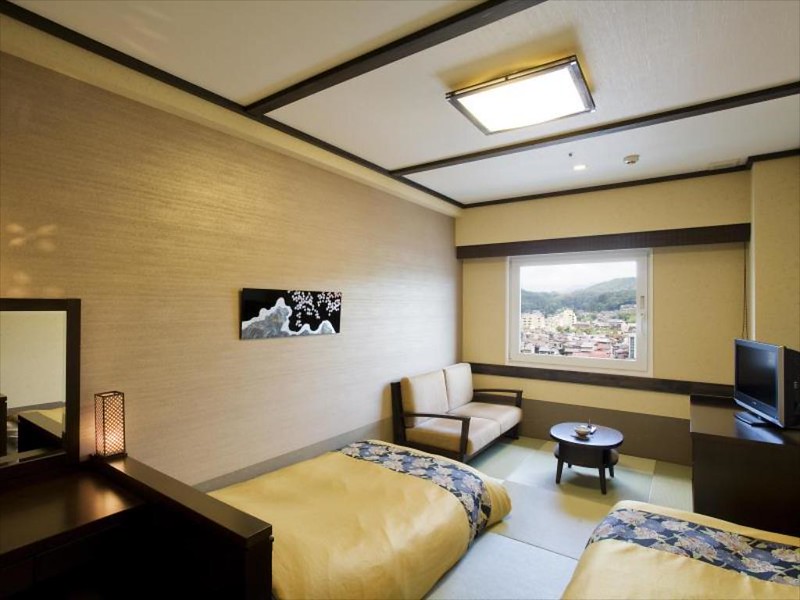
Takayama Hotel Ouan. Photo provided by Agoda
I recommend staying near the Takayama Station since most tourist attractions in Hida-Takayama are concentrated near this area.
- Takayama Hotel Ouan
CHECK ROOM RATES HERE or RESERVE HERE
We stayed at this hotel that has Japanese-style rooms that are pretty clean and comfortable. They have 2 private onsen rooms that guests can use for FREE and they also provide free flowing yogurt drink after taking a dip at the hot onsen.
Here’s a list of budget hotels in Takayama near Takayama Station.
- K’s House Takayama Oasis
Takayama, Takayama
CHECK ROOM RATES HERE or RESERVE HERE
- Country Hotel Takayama
Takayama, Takayama
CHECK ROOM RATES HERE or RESERVE HERE
- Sora-Ama Hostel
Takayama, Takayama
CHECK ROOM RATES HERE or RESERVE HERE
- The Takayama Station Hostel
Takayama, Takayama
CHECK ROOM RATES HERE or RESERVE HERE
SAMPLE 1-2 DAY TAKAYAMA ITINERARY
I’ll blog a detailed Takayama Itinerary soon, but in the meantime, here’s a glimpse of a 1-2 day itinerary for Takayama to help you plan your trip.

DAY 1
- JR Takayama Station
- Hida Kokubunji Temple
- Takayama Jinya
- Tetsutaro Yamaoke Statue
- Morning Markets
- Takayama Municipal Government Memorial
- Sanmachi Suji (Takayama Old Town)
- Sake Brewery Tour
- Takayama Festival Floats Exhibition Hall
- Hida Beef at Ajino Yohei
- Japanese Cultural Performance at Dekonaru-za
DAY 2
- Hida Takayama Museum of Art
- Hida No Sato
- Hida-Furukawa
TRAVEL TIPS AND REMINDERS
- Smoking is prohibited in Takayama Station to protect wooden architectures.
- There are 8 International ATMs at the Post Office in Takayama that accepts Visa, Mastercard, Plus, China UnionPay, Maestro, and Cirrus. But you may also withdraw at international ATMs inside convenience stores like 7Eleven and Lawson. My cards don’t work on Family Mart ATMs though.
- Credit card is accepted in some establishments, but usually small, private shops only accept cash. So, stack up cash to be safe.
- When using the public onsen, change your clothes to yukata first and bring your towel, and other stuff you need to the changing room.

*Cover photo taken by Hasif Hamsyari.
DISCLOSURE: My latest trip to Takayama was made possible by JR Hokuriku Shinkansen (JR Hokuriku Arch Pass).
ALSO READ:
NAGANO: MATSUMUTO TRAVEL GUIDE
NAGANO: LAKE SUWA TRAVEL GUIDE (LAKE IN KIMI NO NAWA/YOUR NAME)
NAGANO: ZENKOJI TEMPLE
NAGANO: HAKUBA TRAVEL GUIDE

